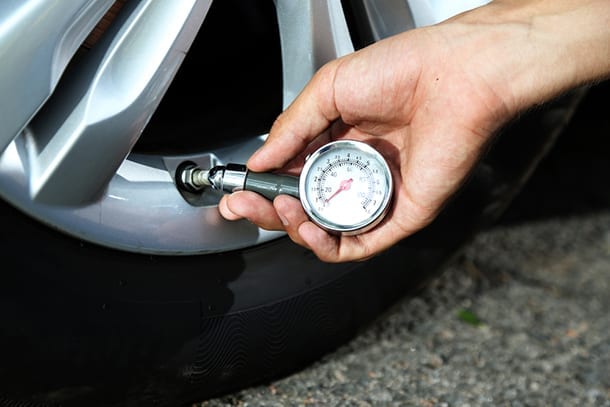
Car Safety – Safe Tyres
When you think about car safety, your mind is probably quickly filled with words like ABS, traction control, electronic stability control, auto emergency braking and the list goes on. Sure, all of this technology can certainly work to improve the safety of your vehicle, but did you know that one of the most important safety considerations of your car is actually your tyres?
The tyres are the only part of the car that touches the road and perform a number of important functions. They must be able to take the entire weight of the vehicle whilst maintaining good handling and responsive braking in any weather condition. Not only that, but tyres provide a buffer between the uneven road surface and the vehicle and passengers. This must all be done with each tyre having an area only the size of a postcard in contact with the road at any given time. Thinking about all of these factors, it is easy to see how important the humble tyre is to the overall safety of your car.
So how do you know if you’re driving on safe tyres? The most important factors are tread and pressure.
Tread
The tread refers to the outer layer of rubber on the circumference of the tyre that touches the road. On new tyres, the depth of the tread will be around 8mm and this wears down during driving. It is estimated that about 1mm of tread is worn every 4000km however a number of factors contribute to how quickly this occurs including road condition, personal driving style, tyre pressure, weather and more. However there is no need to be too concerned with these numbers as every tyre has raised bumps or “tyre wear bars” in the channels of the tyre tread. These bumps are wear indicators and will be at the surface of the tyre when the tread has worn down to the level of the legal tread height of 1.5mm. Once these become apparent, the tyres are said to be worn or bald and need to be replaced.
There are many risks of driving on bald tyres but they are most dangerous on wet roads. When a car travels through water, the tyre pushes a small wave of water ahead of it. The tyre tread is specially engineered to disperse this water and make dry contact with the road. If however, the tread is not sufficient to do this, the tyre will lift off the road surface and begin aquaplaning.
In order to avoid driving on worn tyres, it is a good idea to check the tread every month. It is also recommended to check the tread if you intend to do a long car trip or driving holiday to ensure that you will have sufficient tread for a safe journey.
Pressure
Having the correct tyre pressure is also important for ensuring the safest ride possible in your car. If the tyre is under or over inflated, the contact the tyre has with the road is altered which in turn changes the handling performance of the vehicle. These changes are particularly noticeable when cornering or travelling at speeds over 80km/hr and can reduce the responsiveness of the car in an emergency. Not only does incorrect pressure reduce safety, but it also reduces fuel efficiency. The engine of your car will have to work harder to turn a tyre that is at low pressure and in doing so will need to use up to 20% more fuel. Low pressure also causes the tyre to wear more quickly as it contacts the road in places it wouldn’t normally, such as the tyre shoulder. This is particularly important if your vehicle is carrying a heavy load as it will cause the temperature of the tyre to increase and can lead to tyre damage or failure.
What is the correct pressure for your tyre? The right pressure is different for every vehicle and is calculated by car and tyre manufacturers. You will usually find the correct tyre pressure for your vehicle on a plaque inside the door openings, fuel cap door or glove box. It should also be listed in your vehicle manual. It is recommended to check tyre pressure at least monthly as 1 – 2 kilopascals of air is usually lost in this time period with even greater loss of pressure during the warmer months. Other things to look out for that may suggest your tyres need some attention is any pulling or vibrating at the steering while or unusual sounds at low speeds. Should you notice anything out of the ordinary, take it to a tyre specialist to check it out.
So keep your car safe, save money and reduce wear by checking your tyres for tread and pressure every month.
Now that you know how important checking your cars tyres is, so too is checking to make sure your current car financing arrangements are still competitive. This is where the team at 360 Finance are best suited to assist you and your family in keeping things from going wheely bad!

